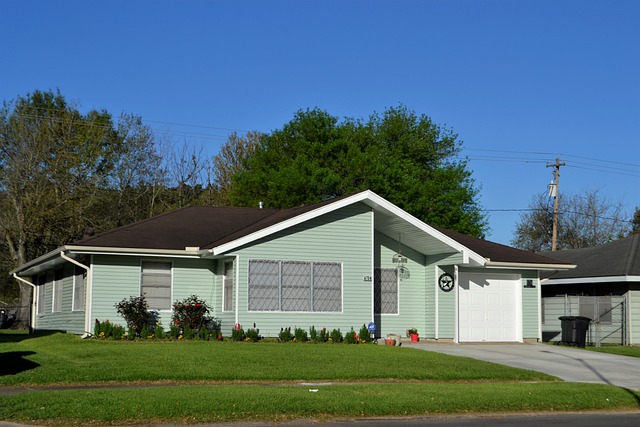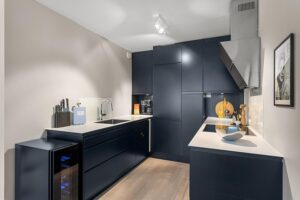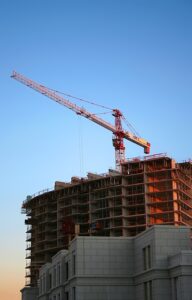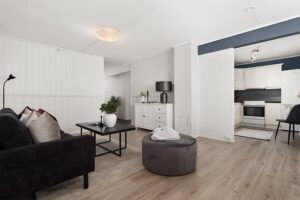EC vs HDB Pricing in Singapore: A Comprehensive Comparison of Executive Condominium Trends and Investment Strategies
The average price of Executive Condominiums (ECs) in Singapore has been on an upward trajectory, reflecting a strong market confidence and growing demand. ECs offer a middle-ground housing option for those who outgrow HDB flats but are not ready for private c…….

The average price of Executive Condominiums (ECs) in Singapore has been on an upward trajectory, reflecting a strong market confidence and growing demand. ECs offer a middle-ground housing option for those who outgrow HDB flats but are not ready for private condominiums, with prices influenced by factors like location, unit type, development size, and age. As of late, EC prices have reached levels comparable to resale HDB flat prices in popular areas, making them an attractive investment with added conveniences. The market for ECs is dynamic, affected by economic conditions, policy changes, and urban development strategies, with experts predicting that EC prices are likely to continue rising, though with potential fluctuations. For those considering ECs as a housing or investment option, it's crucial to monitor average pricing, consider the property's location and amenities, and stay informed on market trends and government policies. Investors should analyze the average price of ECs in Singapore alongside broader market dynamics for both ECs and HDB flats to make well-informed decisions that align with their financial goals and investment horizons.
Exploring the real estate landscape in Singapore, one cannot ignore the significant role played by Executive Condominiums (ECs) and Housing & Development Board (HDB) flats. This article delves into a comprehensive comparison of their average prices, examining factors that shape these values across various regions. From understanding the current average price of ECs in Singapore to historical trends and future projections, we dissect how EC prices contrast with those of HDBs. Investors will find valuable insights in this analysis, aiding them in making informed decisions between these two housing options.
- Understanding the Average Price of ECs in Singapore: An Overview
- Factors Influencing Executive Condominium Prices in Different Regions
- Comparing EC Prices with HDB Prices: A Detailed Analysis
- Historical Trends and Predicted Trajectories of EC and HDB Prices
- Strategies for Investors: Evaluating the Best Buys Between ECs and HDBs
Understanding the Average Price of ECs in Singapore: An Overview

In the dynamic real estate landscape of Singapore, Executive Condominiums (ECs) have emerged as a popular housing option for both singles and families who do not qualify for Housing & Development Board (HDB) flats due to income ceilings but aspire for something more spacious than a resale HDB flat. The average price of ECs in Singapore has been on an upward trajectory, reflecting the growing demand and the desirability of these properties. As of recent analysis, the average price of ECs has surpassed previous benchmarks, with new launches often fetching prices that are comparable to those of private condominiums. This trend is indicative of the market’s confidence in the long-term value of ECs as a property class. Prospective buyers should take note that the pricing of ECs can be influenced by various factors, including location, unit type, development size, and the age of the EC. For instance, newer launches in sought-after districts typically command higher prices, while older ECs might offer more affordable options for those looking to enter the property market without the constraints of living in an HDB flat. Keeping abreast of the average price of ECs in Singapore is crucial for anyone interested in this housing segment, as it provides a benchmark against which to assess affordability and investment potential. The data on EC prices can be gleaned from public records, real estate portals, and market analyses, offering a comprehensive overview that aids in informed decision-making for both current and aspiring homeowners.
Factors Influencing Executive Condominium Prices in Different Regions

The average price of an Executive Condominium (EC) in Singapore is influenced by a multitude of factors, each playing a significant role in shaping the market dynamics within different regions. Geographical location remains a pivotal determinant; ECs situated in mature estates with established infrastructure, such as those near town centers or within close proximity to Mass Rapid Transit (MRT) stations, tend to command higher prices due to their convenience and accessibility. The age of the development also impacts pricing, with newer ECs typically fetching higher average prices compared to older ones, reflecting both contemporary design preferences and the potential for future appreciation.
Another critical factor is the supply and demand dynamics within the region. Areas with limited new EC launches might see an increase in prices due to scarcity, while regions with a higher concentration of such units may experience more competitive pricing. Additionally, the socio-economic profile of the neighborhood, including the presence of reputable schools, commercial amenities, and healthcare facilities, can enhance property desirability and, consequently, influence EC pricing. Furthermore, government policies, including eligibility criteria for purchasing ECs, have a profound effect on both supply and demand, thereby affecting prices. Investors and homebuyers closely monitor these factors to make informed decisions, as the average price of an EC in Singapore is not static but rather subject to continuous fluctuation based on these influencing variables.
Comparing EC Prices with HDB Prices: A Detailed Analysis

In the realm of housing options in Singapore, both Executive Condominiums (ECs) and Housing & Development Board (HDB) flats serve as significant residential choices for a diverse demographic. A comprehensive analysis comparing the average price of ECs with HDB prices reveals distinct patterns that cater to different financial capabilities and aspirations. ECs are hybrid housing options designed for Singaporeans who aspire to upgrade from an HDB flat to a private condominium in the future, offering a balance between affordability and the amenities of a private property. The average price of ECs has been on an upward trajectory, reflecting the demand for larger living spaces and enhanced facilities. As of recent years, prices for ECs have been comparable to those of resale HDB flats in choice locations, offering buyers an alternative with potential investment value and additional conveniences.
Conversely, HDB flats remain the most accessible form of public housing, providing a stable foundation for first-time homeowners. The pricing of new HDB flats is generally more affordable than ECs, catering to lower to middle-income families. However, the resale market for HDB flats can vary significantly in prices, influenced by factors such as flat type, location, and condition. Prospective buyers interested in the average price of ECs versus HDB prices should consider their long-term housing goals, financial planning, and the type of living environment they prefer. This comparison is crucial for individuals making a decision that will have significant implications on their lifestyle and financial future. The choice between an EC and an HDB flat often comes down to a balance between immediate affordability and potential property value appreciation, as well as the desire for specific features and amenities. Understanding the nuances of both market segments is essential for a well-informed decision, considering that both housing options are integral parts of Singapore’s diverse living landscape.
Historical Trends and Predicted Trajectories of EC and HDB Prices

Over the past decades, the average price of Executive Condominiums (ECs) in Singapore has demonstrated a trend that reflects both the growth of the property market and the evolving needs of homeowners. Initially positioned as a hybrid between public and private housing, EC prices have historically shown resilience, tracking closely with the broader residential property market trends. Prices have seen cyclical upticks, often mirroring the peaks in the Housing & Development Board (HDB) resale market, while also being influenced by macroeconomic factors such as interest rates and the overall economic climate. The pricing trajectory of ECs has been shaped by policies aimed at balancing affordability with investment potential, making them an attractive option for both first-time homeowners and upgraders.
Looking ahead, market analysts and real estate experts have predicted a continuation of this trend, with the average price of ECs expected to rise, albeit with fluctuations influenced by policy changes and economic shifts. The predicted trajectory takes into account factors such as population growth, urban development plans, and the supply of new EC units. These predictions suggest that ECs will remain a competitive housing option in Singapore’s dynamic property landscape, with their prices potentially outpacing those of HDB flats in the long term, especially considering the additional facilities and amenities often associated with EC living. As such, potential buyers and investors are encouraged to monitor both historical trends and expert predictions to make informed decisions regarding EC investments.
Strategies for Investors: Evaluating the Best Buys Between ECs and HDBs

When discerning between the investment potential of an Executive Condominium (EC) and a Housing & Development Board (HDB) flat in Singapore, investors should consider a multitude of factors. The average price of an EC in Singapore has been a subject of keen interest among property investors due to its unique position as a hybrid housing option that offers the benefits of both public and private housing. Unlike HDB flats, which are specifically designed for Singapore citizens and permanent residents, ECs cater to both eligible singles, couples, and families, including those considering upgrading from an HDB flat. A strategic approach involves analyzing the market trends, understanding the varying prices across different regions, and assessing the growth potential of the area where the property is located. Factors such as proximity to amenities, accessibility, and future development plans can significantly influence the property’s value over time. Investors should also consider their investment horizon, as ECs have a unique feature: they revert to regular condominium status after a certain period, potentially increasing their marketability. By weighing these aspects alongside the average price of an EC in Singapore, investors can make informed decisions tailored to their financial goals and market trends. It’s crucial to keep abreast of policy changes, as the government’s initiatives can affect both EC and HDB pricing and demand. A well-informed investment strategy, therefore, should be flexible enough to adapt to these shifts while leveraging the insights drawn from a thorough comparison of EC and HDB prices.
In conclusion, the average price of ECs in Singapore has shown a distinct pattern over the years, influenced by factors such as location, demand, and market conditions. When juxtaposing EC prices with those of HDBs, it becomes evident that while both housing types serve the needs of different segments of the population, ECs tend to offer more space and potentially greater value for investors, albeit at a higher cost. Historical trends suggest a steady increase in prices for both types of homes, though the trajectory for ECs may diverge under certain economic scenarios. For prospective homeowners and investors alike, understanding the nuances between EC and HDB pricing is crucial for informed decision-making. By considering the insights from this analysis, one can navigate the property market with a clearer view of the relative value each housing type offers in Singapore’s dynamic landscape.







